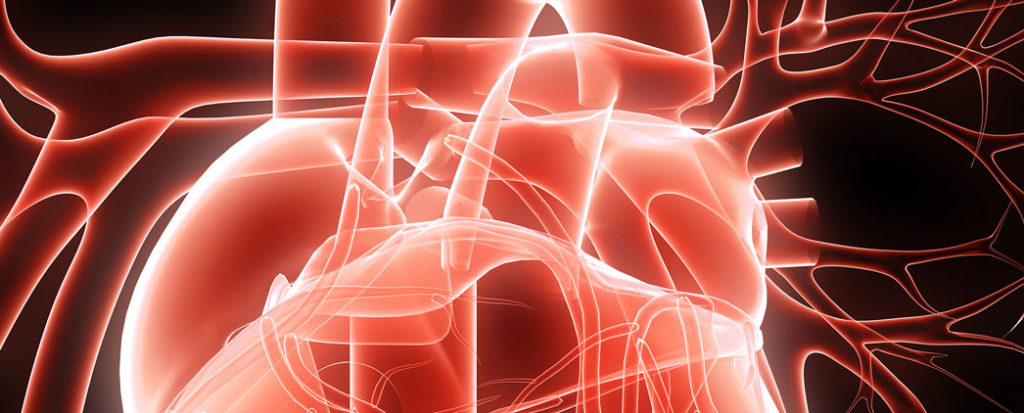Endothelial dysfunction in heart failure and ischemic heart disease: rationale for the clinical use of mononitrates
Abstract
Overview
The clinical observation that heart failure can progress independently of the patient’s
hemodynamic status has focused interest on new, potential mechanisms underlying the
progression of cardiac insufficiency. It has been shown that in both ischemic and non-ischemic
heart failure, endothelial dysfunction and reduced bioavailability of NO can contribute to the
process of left ventricular remodelling. The endothelial dysfunction contributes to increasing peripheral
vascular resistance, limiting blood flow to skeletal muscles, particularly during exercise,
and compromising the regulation of pulmonary blood flow, leading to a flow-perfusion mismatch.
The nitroderivates are a heterogeneous class of compounds that have in common their
pharmacodynamic action, which is mediated through the production of NO.
Isosorbide-2-mononitrate (IS-2-MN) and isosorbide-5-mononitrate (IS-5-MN) are the two main
metabolites of isosorbide dinitrate (ISDN) and both act on the smooth muscle cells of vessel
walls, causing generalized peripheral vasodilation, which is more marked in the venous system,
reduced venous return to the heart and a reduction in peripheral resistance.
The shorter half-life of IS-2-MN compared to that of IS-5-MN allows greater fluctuation of the blood
levels of the drug; it can, therefore, be hypothesized that tolerance would develop more slowly.
In the light of the important role of oxidative stress in the progression of heart failure, reduced
occupation of the receptors for NO by IS-2-MN could have important implications for the
bioavailability of the sulphydryl groups otherwise involved in the denitrification of the organic nitrates.
(Heart International 2007; 3: 86-97)
Keywords
Nitrates, Endothelial dysfunction, Heart failure, Ischemic heart disease
Article Information
Correspondence
Prof. Oberdan Parodi, CNR Clincal Physiology Institute of Milan, Cardiology Department, Niguarda Cà Granda Hospital, Piazza Ospedale Maggiore, 3, 20162 Milan – Italy, ifcnig@tin.it

Trending Topic
Heart failure (HF), a prevalent disease, is the common final pathway of several conditions, which result in the activation of numerous neurohumoral pathways. Cardiorenal interaction plays an essential role in the progression of the disease, and the use of diuretics is a cornerstone in the treatment of hypervolemic patients, especially in acute decompensated HF (ADHF).1 The […]
Related Content in Heart Failure

Palliative care (PC) is recommended as a standard of practice for all patients with heart failure (HF) and is supported by evidence of improved patient outcomes (e.g. reduction in symptoms refractory to cardiovascular therapies and improved shared decision-making).1 PC ...

Heart failure (HF) is a common clinical diagnosis often requiring hospitalization secondary to patient decompensation associated with clinically determined 'dry' or 'wet' volume states. However, fluid overload is the more common basis for clinical deterioration accounting for the majority of ...

Heart failure (HF) is a complex syndrome caused by a variety of cardiac and non-cardiac diseases, and is associated with high mortality and hospitalization rates.1 Treatment has been traditionally based on a detailed history and physical examination. However, since cardiac ...

Conventionally, according to the European Society of Cardiology pacing and cardiac resynchronization therapy (CRT) guidelines, patients with clinical heart failure and an echocardiographically measured left ventricular (LV) ejection fraction of <35% are considered for CRT implantation or standard right ventricular (...

Atrial fibrillation (AF) and heart failure (HF) often co-exist. The incidence of AF is estimated to reach 45% of patients with HF and rises with the severity of HF symptoms, from about 5% of patients in the New York Heart Association (NYHA) ...

Heart failure (HF) is an increasingly prevalent clinical syndrome resulting from a variety of disease processes impeding the heart’s ability to effectively circulate blood. With advances in care and a steadily growing and aging population, HF management is becoming ...

Heart failure (HF) is a highly prevalent and morbid disease in the USA, imposing a significant burden on patients, hospitals and the health system. The prevalence of HF continues to increase, with over 650,000 new HF cases diagnosed annually.1 There are ...

Over the past years, several reports have drawn attention to the need to consider sex-specific differences in cardiac resynchronisation therapy (CRT). Most importantly, there is growing concern on the underrepresentation of women in CRT landmark trials which laid the foundation ...

Introduction: Medical therapy for heart failure with reduced ejection fraction (HfrEF) improves quality of life, reduces heart failure hospitalization and mortality, and reduces the risk of ventricular arrhythmias. International guidelines recommend four key drug classes for all patients with HfrEF. ...

Background: Trials to detect a mortality benefit in heart failure require long follow up periods and large numbers of participants, which is costly and time-consuming. It is quicker and more feasible to assess quality of life. The Minnesota Living With ...

Background: TriageHF (Medtronic) is a remote monitoring algorithm that stratifies a patient’s risk of a heart failure (HF) event within the next 30 days as high, medium or low, based on integrated cardiac resynchronization therapy (CRT) device diagnostic data. TriageHF ...

Introduction: The relationship between ABO blood group and Rhesus status with survival outcomes in patients with heart failure (HF) managed with CRT-P/D remains unclear. Understanding this association could provide valuable insights for developing innovative therapeutic approaches, guiding risk-stratification methods, ...
Latest articles videos and clinical updates - straight to your inbox
Log into your Touch Account
Earn and track your CME credits on the go, save articles for later, and follow the latest congress coverage.
Register now for FREE Access
Register for free to hear about the latest expert-led education, peer-reviewed articles, conference highlights, and innovative CME activities.
Sign up with an Email
Or use a Social Account.
This Functionality is for
Members Only
Explore the latest in medical education and stay current in your field. Create a free account to track your learning.

